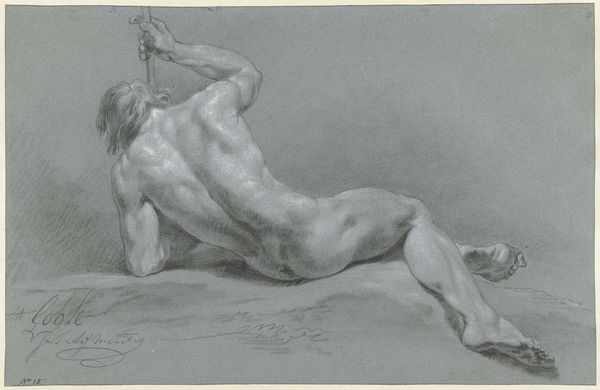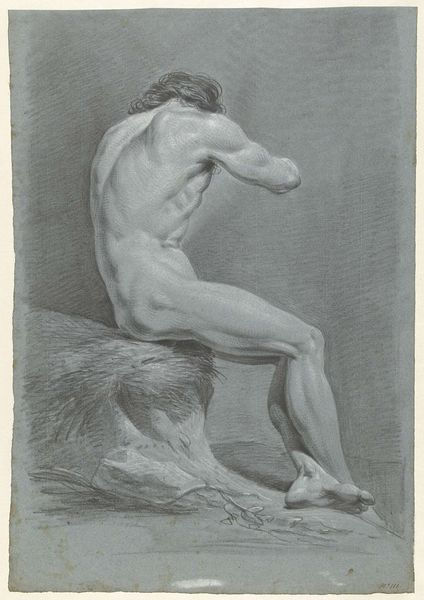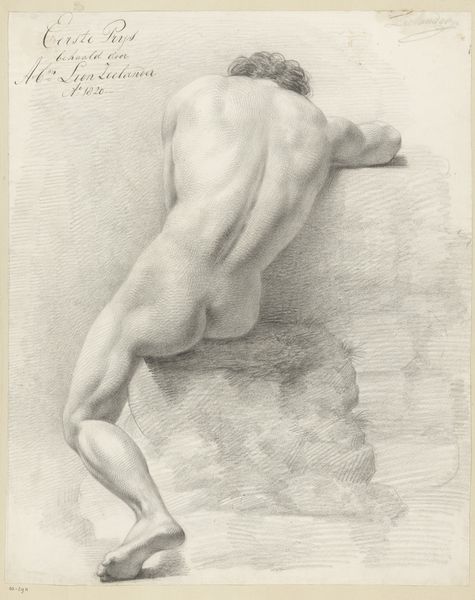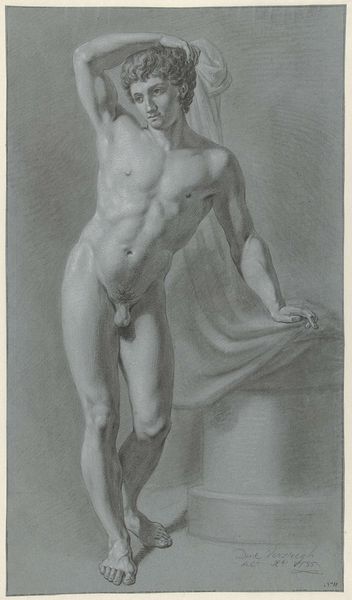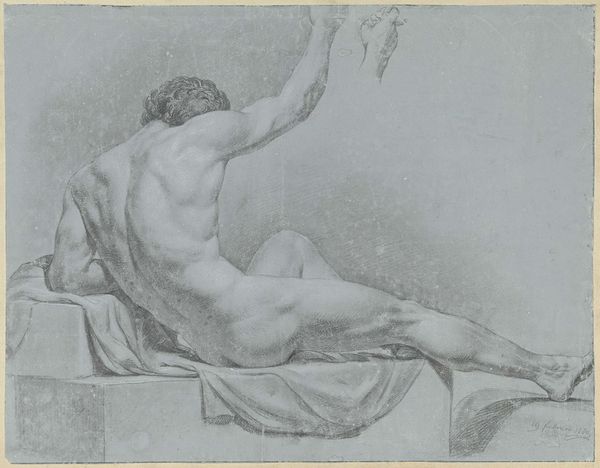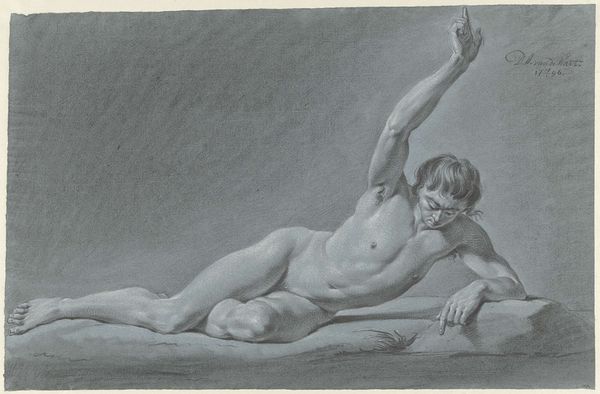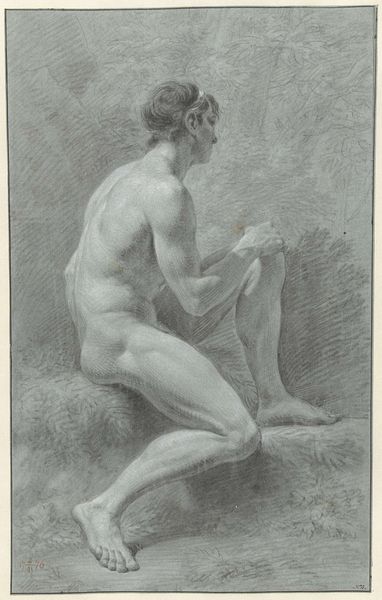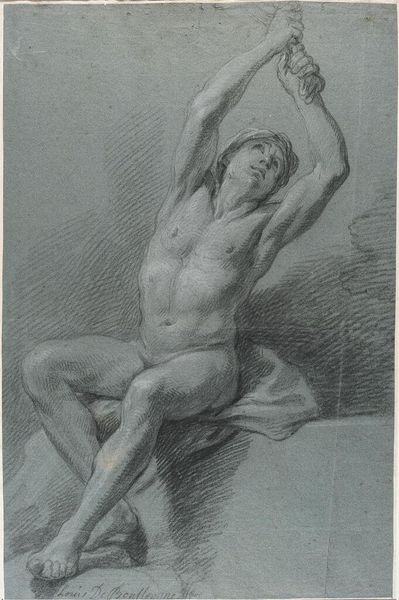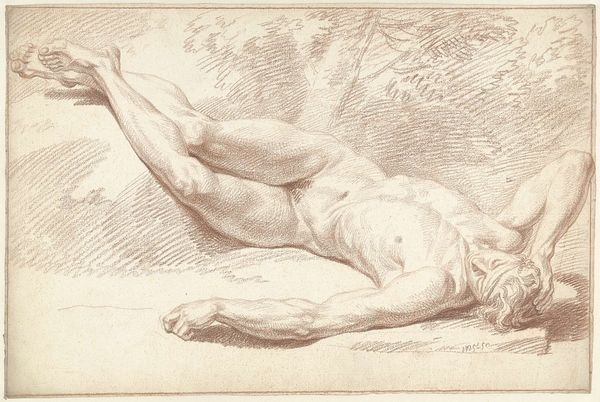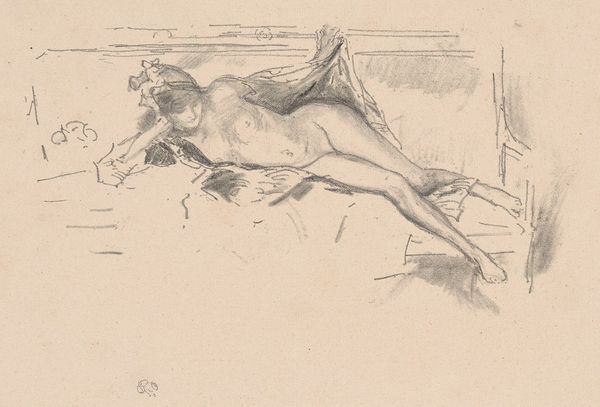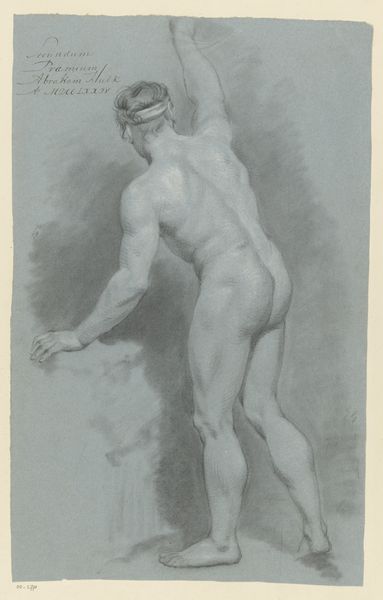
drawing, pencil, charcoal
#
portrait
#
pencil drawn
#
drawing
#
neoclassicism
#
pencil sketch
#
charcoal drawing
#
pencil drawing
#
pencil
#
portrait drawing
#
charcoal
#
academic-art
#
nude
Dimensions: height 253 mm, width 438 mm
Copyright: Rijks Museum: Open Domain
Curator: Here we have Jan Tersteeg's "Liggend mannelijk naakt, op de rug, het hoofd ver achterover," created in 1782. It’s a study done in pencil and charcoal. What’s your immediate take on it? Editor: The pose strikes me first. The reclining male nude, head thrown back—it feels almost theatrical, suggestive of classical tragedy or perhaps an ecstatic vision. There’s a certain vulnerability in the exposed neck and upward gaze. Curator: Indeed, that tension is compelling. Notice how Tersteeg renders the form: the precise cross-hatching defining the musculature, the careful modulation of light and shadow. It adheres to academic principles of neoclassicism while conveying movement. Editor: Symbolically, the contrapposto hints at inner turmoil, almost a modern angst projected onto the classical ideal. I'm also intrigued by the closed fist—what’s that clenched hand signifying? Curator: Consider it structurally: that fist echoes the tension in the splayed toes and bent knee, serving as a focal counterpoint to the figure’s relaxed center. Semiotically, those lines direct the viewer's eye. Editor: Still, in art history, clenched fists are frequently associated with conflict, defiance, resistance. The symbol, positioned centrally in the artwork, suggests themes related to power, force, anger. Curator: Perhaps. Although this charcoal and pencil drawing embodies a standard exercise from that period of training, what appears to be powerful, raw emotion, it’s a meticulously calculated performance for an art consumer. Editor: Yes, I understand that. The classical motif and composition offer the foundation for symbolic explorations regarding existential challenges. But that's what’s compelling, isn't it? How cultural values intermingle through an artwork's structural components. Curator: Precisely. Even within formal exercises we are prompted to acknowledge how a piece subtly carries symbolic weight, which only further informs visual analyses. Editor: Absolutely, it enriches the work, drawing out historical interpretations while expanding personal perspectives.
Comments
No comments
Be the first to comment and join the conversation on the ultimate creative platform.
